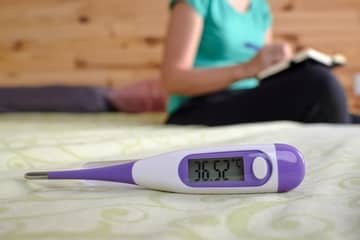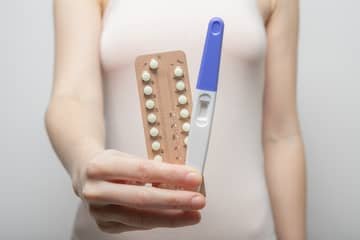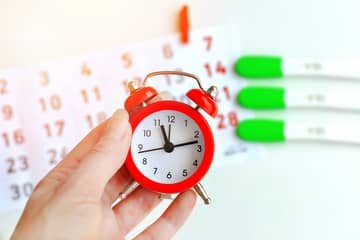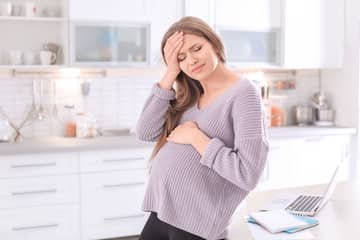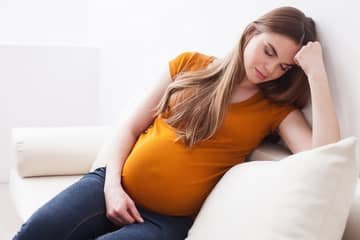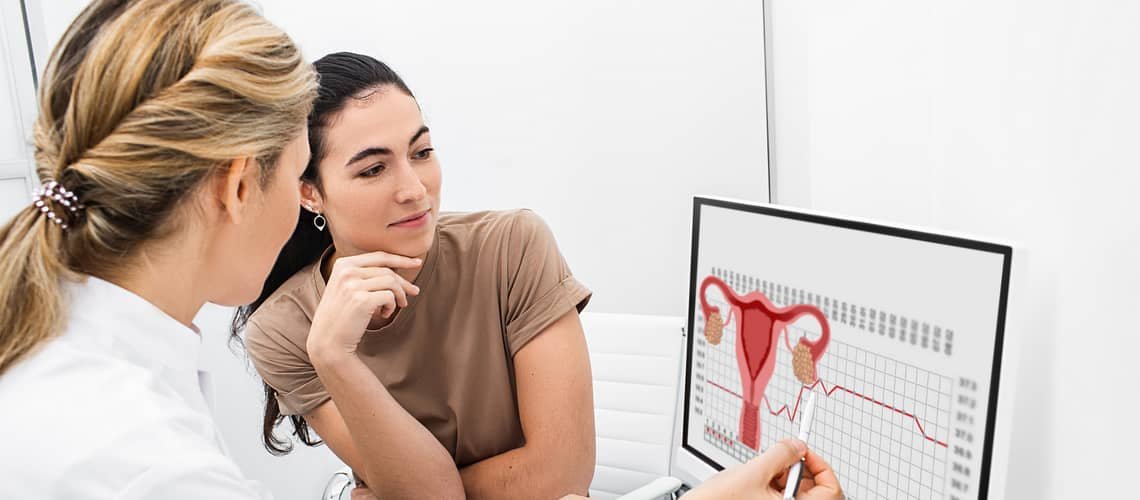
The most accurate calculation of fertile days even with an irregular cycle. When a girl, when a boy?
Are you trying for a baby? The effort of every woman should be to understand her body and thus also the menstrual cycle. All the more so if you and your beloved partner are trying to conceive a baby. The menstrual cycle plays an enormously important role in this case. The most important are precisely the fertile days, which represent a time-limited period during which there is the highest chance that fertilization, subsequent implantation of the egg, and the beginning of pregnancy will occur during unprotected sexual intercourse. The most accurate calculation of fertile days means that a woman knows when her so-called window of fertility and ovulation is taking place. There are several more or less accurate methods for calculating fertile days. Is Jonah's method really accurate? Will a calculator help in calculating fertile days?
- The four phases of the menstrual cycle
- Ovulation - fertile days
- Ovulation calendar - fertile and infertile days
- The most accurate calculation of fertile days and egg fertilization
- Calculation of fertile days according to Jonáš
- Billings ovulation method and STM
- Accurate calculation of fertile days - experience
- The most frequent questions - FAQ
- Comments
Timing is of great importance when trying to conceive a child. Couples trying to conceive often wonder when is the best time to try to conceive to ensure that unprotected sex is effective. From a practical point of view, there is no guarantee. However, if the answer were to be simple, it would suffice to say that it is best to try to get pregnant during a woman's ovulation. This is the period around the middle of the regular menstrual cycle. Just as there is menstrual bleeding (menstrual phase) every month, there is also ovulation (ovulatory phase) every month, which lasts only 12 to 24 hours and is crucial for successful fertilization, because it is during this phase that a mature egg is released ready for fertilization. When planning pregnancy, it is advisable to know fertile and infertile days. How to calculate fertile days with irregular menstruation? What is an ovulation calendar?
The four phases of the menstrual cycle
It is a woman's hormonal and at the same time physiological cycle. Technically, it is also called eumenorrhea or ovarian cycle. It is divided into four phases. These are systematically repeated processes in the female organism, the aim of which is to ensure the optimal environment and conditions for successful fertilization and subsequent pregnancy.
The menstrual cycle in women starts around the time of puberty (note, on average at the age of 13) and lasts until the menopause. During functional eumenorrhea, a woman has a fertile period, i.e. a period of fertility. The standard length of the menstrual cycle is 28 to 30 days. Regular longer or shorter cycles (e.g. 21 days or up to 35 days) are no exception. However, the regularity and length of the cycle is influenced by a number of factors, which is also related to determining the expected time of menstrual bleeding or the course of ovulation. The most accurate calculation of fertile days can be done precisely if this physiological cycle in the woman's body is regular.
The length of the cycle, as well as the regularity, are affected by, for example, the age of the woman, current lifestyle, stress, weight changes, hormone levels, diseases or inflammations in the body, medical treatment in case of illness (note that it is obvious that the menstrual cycle can be affected by the use of certain drugs, e.g. antibiotics). Several factors can cause the cycle to run differently, longer, shorter, more or less intensively. Menstruation, its symptoms, intensity, regularity - irregularity change during a woman's life. How do the four individual phases of the menstrual cycle take place? When are the fertile days after menstruation?
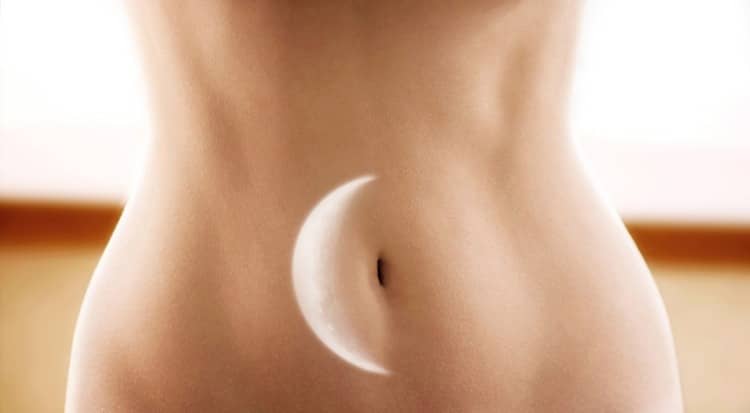
Menstrual phase
It is considered the first phase of the cycle itself and is manifested by typical bleeding from the vagina, which is caused by the separation of the lining of the uterus and the unfertilized egg. This phase lasts from 2 to 7 days. In addition to bleeding, this phase is typically manifested by more or less intense pains in the lower abdomen, which are caused by muscle contractions of the uterus. Indigestion may also appear and breast sensitivity increases. The level of fatigue also increases and the level of hormones decreases. During this period, it can be said that these are the most infertile days in the entire cycle.
Follicular phase
This phase begins immediately after the end of menstruation. During this period, the egg matures in the ovaries. It is a hormonal phase during which the level of estrogen increases. During this period, the uterine environment is being prepared for possible implantation of a fertilized egg. After the end of the menstrual phase, the follicular phase lasts approximately 6 days. With the onset of hormones, a woman is more energetic and active.
Ovulation phase
After the egg matures, the ovulation phase follows. During this period (approximately the middle of a regular 28-day cycle), the egg is released from the ovary and travels through the fallopian tube to the uterus. Ovulation takes place alternately once in one and once in the other ovary, from where the dominant egg is always released. During this phase, which lasts about 12 to 24 hours in a regular 28-day cycle (some sources say 24 to 48 hours), the egg can meet the man's sperm and be fertilized. Estrogen levels, FSH (follicle-stimulating hormone) and LH (luteinizing hormone) are high. Among the symptoms, women indicate pain in the lower abdomen, occasional discharge of a watery-mucous discharge from the cervix, and an increase in sexual libido is also typical.
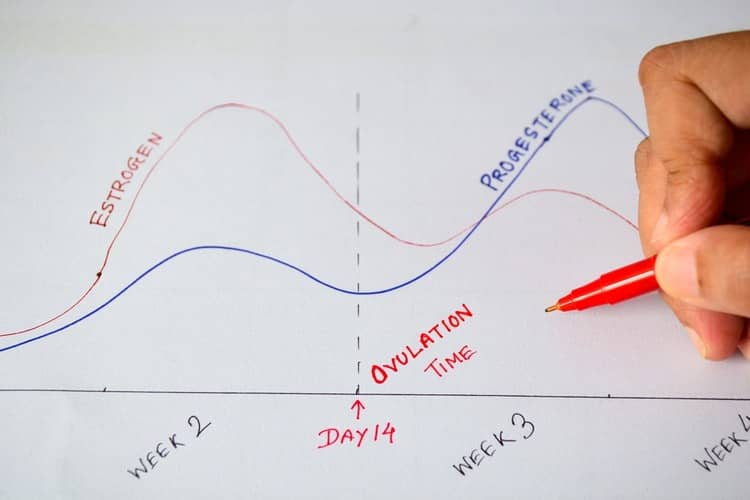
Luteal phase
The final phase is the luteal phase. It lasts up to 16 days, during which there is a decrease in estrogen and the production of progesterone. If the egg was not fertilized in the ovulatory phase, it breaks down and is expelled from the vagina along with the uterine tissue and blood during the menstrual phase. A ruptured follicle in the ovary turns into a corpus luteum, which produces progesterone and prepares the uterus for implantation of the egg. The unfertilized egg subsequently disappears in the luteal phase and is expelled during menstruation. Pain in the lower abdomen, mood swings, headaches, irritability, so-called PMS – premenstrual syndrome.
Ovulation - fertile days
Ovulation as a process represents a limited period of time, which is manifested by release - the expulsion of a mature egg from the ovary into the fallopian tubes. During its journey, this egg is ready to be fertilized, and if it meets the male's dominant sperm, there is a high chance that they will fuse. If a woman can perceive the ovulation phase, it is possible to determine when the fertile and infertile days are, that is, during which days there is the highest chance of getting pregnant.
After the follicular phase, during which the egg (oocyte) matures in the ovary, ovulation is the phase in which a woman's fertile window begins. In this phase, due to the high level of estrogen, mucus is also formed, which provides a hospitable environment for the sperm and allows them to move better. Mucous discharge is one of the symptoms of the arrival of the ovulation phase. After the egg is expelled into the fallopian tubes, it awaits potential fertilization. Subsequently, after merging with the sperm, the fertilized egg travels for approximately 6 to 12 days before trying to implant in the lining of the uterus. If the egg is successfully implanted, it can be concluded that pregnancy has occurred. If fertilization fails, the egg will be expelled from the body along with blood during menstruation.
It is important to note that the ovulatory phase, its timing, course and duration may differ for each woman individually and may even change during individual cycles. Ovulation represents a window of fertility that lasts approximately 12 to 24 hours, during which the egg is most capable of being fertilized after ovulation.
Precisely because the window of fertility is limited only by a short interval once a month, i.e. 12 times a year, it is important for a woman to develop her own – individual ovulation calendar when trying to get pregnant, on the basis of which it is possible to calculate the fertile days.
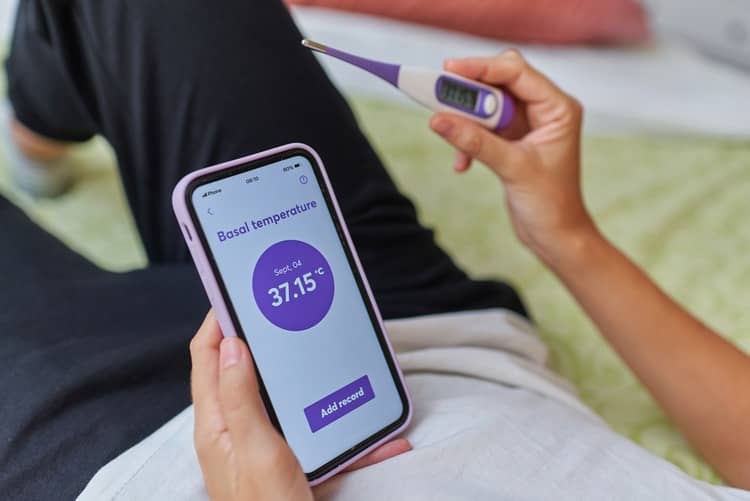
Typical symptoms of ovulation
In some women, only very weak symptoms appear during ovulation, and in others they are unequivocal. At the same time, the ovulation phase can manifest itself differently from cycle to cycle. However, there are known typical symptoms, on the basis of which it is possible to clearly determine whether a woman is currently ovulating.
- Lower abdominal pain (usually localized stabbing pain)
- Mucous discharge from the vagina
- Fuller and more sensitive breasts
- Increase in sexual appetite
- Increase in libido and increase in attractiveness
- Sensitivity to smells
How do I know I'm ovulating? If a woman is not sure based on symptoms during her own menstrual cycle and cannot determine ovulation even on the basis of an ovulation calendar, one option is to measure the basal temperature, which increases after ovulation. The measurement takes place every morning after waking up on an empty stomach at the same time. It starts no more than 3-4 days after the end of menstruation. The same thermometer is always used. Temperature measurement is done in the mouth, vagina or rectum, never in the armpit. The disadvantage of measuring the basal temperature is that it can be influenced by other factors. Another option is ovulation tests, which you can buy in pharmacies. Ovulation is determined by the test based on the concentration of luteinizing hormone. Follow the instructions on the package leaflet.
Ovulation calendar - fertile and infertile days
There are various methods of calculating fertile days, while the ovulation calendar is one of the indicative methods recommended by doctors themselves. The most important thing for a woman when trying to get pregnant is monitoring her own menstrual cycle, on the basis of which it is possible to develop an ovulation calendar. However, keep in mind that the ovulation calendar only represents indicative intervals.
Thanks to the fact that the woman will record the symptoms during the individual days of the cycle, she will better understand the patterns themselves (and the duration of the cycle itself), which are also related to determining the approximate date of ovulation. Thanks to the developed ovulation calendar, a woman will know her fertile days, infertile days, approximate date of ovulation and menstruation. It is even possible to calculate the fertile days to determine the gender - boy or girl. Attention, the calculation of fertile days during irregular menstruation cannot be considered a relevant method of calculating fertile days. If you have an irregular cycle, i.e. one that does not last from 21 to 35 days or lasts differently every month, it is advisable to consult your gynecologist.
The most accurate calculation of fertile days and egg fertilization
When trying to increase your chances of getting pregnant, calculating your fertile days is the best way. However, the ovulation calendar is not the only method by which it is possible to determine when there is the highest chance of pregnancy. You have the highest chance of conception if you practice unprotected intercourse two days before ovulation, on the day of ovulation and the day after ovulation. Some sources state that it is appropriate to work on offspring 4 to 5 days before the expected ovulation and 2 to 4 days after ovulation. It is scientifically proven that despite the fact that the egg is not yet in the birth canal, healthy male sperm can survive in the birth canal for approximately 3 to 7 days. Therefore, the egg does not have to be fertilized on the day of sexual intercourse, but it can still fuse a few days later. Sperm also extend the ability of the egg to survive in the fallopian tubes for up to 48 hours.
One of the possible and medically proven ways to find out when ovulation occurs and thus the window of fertility occurs is folliculometry. It is a painless examination, during which the number and size of follicles in the ovaries is determined with the help of ultrasound. Around the middle of the menstrual cycle, the doctor observes the growth of follicles. Subsequently, the woman goes for a check-up approximately every two days. In the event that one of the follicles is large and there is a probability that it will burst (a mature egg is released), it is determined that there is a high chance of successful fertilization and conception of a baby during this period.
Calculation of fertile days according to Jonáš
Jonas method of conception uses a specific method of determining the highest fertility rate based on the exact date, time and place of a woman's birth. A specific algorithm is then used to calculate the functioning of the woman's biological rhythms. The calculation is always individual. Global biorhythms are also taken into account. Within Jonáš's method for calculating fertile days, the phases and positions of the Moon and the Sun are also taken into account. At the same time, the lunar cycle is calculated. By 1968, the success rate of this method was up to 96%. During subsequent research in practice, the success rate rose to 98.6%.
Jonáš's method for calculating fertile days is intended for couples in which there is no medically known physiological obstacle that would prevent fertility and subsequent pregnancy. A woman must have at least one functioning ovary, fallopian tube and no uterine disorders. In men, the spermiogram must have values that guarantee fertility and the presence of functional sperm. At the same time, it is also possible to calculate the infertile days, during which unprotected sexual intercourse should be safe and there should be no danger of conceiving a child. All calculations are officially performed by the Jonas International Center.
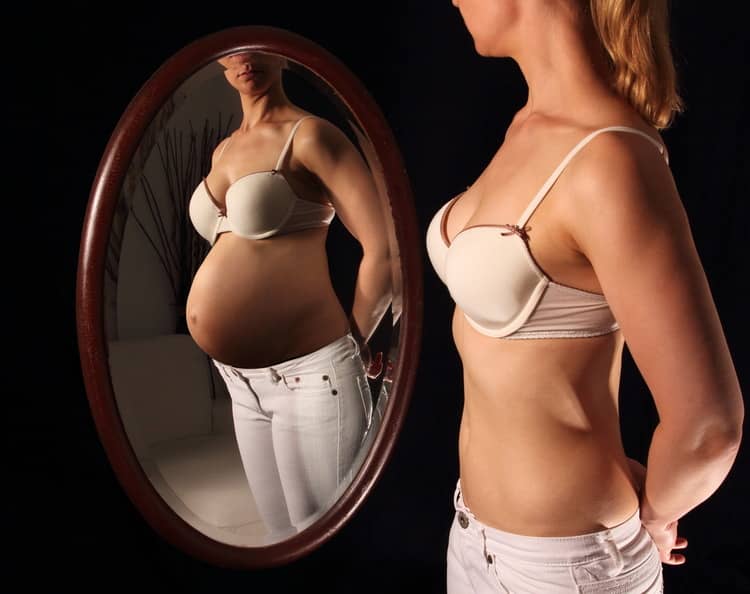
Calculation of fertile days - boy or girl?
Jonáš's method is also used in gender determination. The percentage success rate of this method is not completely known. The calculation is carried out in the same way as in the case of calculating fertile and infertile days. The conception plan determines for individual fertile days when there is a greater chance of conceiving a boy or a girl. This plan is established for 12 calendar months.
Billings ovulation method and STM
When determining fertile days using the Billings method, a woman observes a change in the consistency of vaginal discharge. One of the symptoms of ovulation is that during fertile days the discharge is more mucous, but more watery. Thanks to this, it allows the sperm to move better and facilitates their survival. Outside the ovulation period, the mucus is thicker and not as sticky. As ovulation approaches, a woman can observe and feel the consistency of the mucus. You should then write down the characteristics themselves.
This method is similar to the more precise principle of determining fertile days using the Symptothermal Method (STM), during which several characteristics of the menstrual cycle are monitored and allow a woman to understand her body much better. In addition to mucus consistency, basal temperature, symptoms such as menstrual cramps, breast pain, sexual appetite, energy, fatigue or moods are monitored. Such an observation needs to be carried out on several successive cycles. It is necessary to take into account deviations.
Accurate calculation of fertile days - experience
Mostly, women exchange experiences in discussions regarding the calculation of fertile days with the help of an ovulation calendar. The basis for the calculation is therefore that ovulation occurs approximately in the middle of the menstrual cycle. Some women recommend also trying to measure the basal temperature or monitor the consistency of the discharge. In discussions, some women advise using ovulation tests. The participating discussions also point out that the most important thing is to know how many days the entire menstrual cycle lasts. 21 to 35 days are considered physiological. If the cycle is shorter or longer, it is advisable to contact a gynecologist.
Women also report that the cycle itself can change from month to month. Several women recommend keeping a menstrual calendar and writing down individual symptoms. Some discussants also positively evaluate Jonas's method. Others are skeptical of it and consider it just a business. Thanks to folliculometry, even a doctor can determine when the fertile days are.
The most frequent questions - FAQ
If you are in the period of your life during which you are trying to get pregnant, the topic of the article will surely interest you. Some couples are lucky enough to get pregnant on the first try, others go through monthly efforts that can last for several years. Fertility itself is a topic in itself, but if a woman and a man are in order from a physiological point of view, nothing prevents a natural pregnancy. Nevertheless, it is a very sensitive topic. An important role in this direction is played by a woman's fertile days, during which she can become pregnant. How to calculate fertile days? Does the Jonah Method for calculating fertility work? Join the discussion and share your advice, tips, experiences and recommendations.
How to calculate fertile days?
When are infertile days?
Is there a calculator for calculating fertile days?
How to make a calculation according to the date of birth?
When are the fertile days after menstruation?
Pridať komentár

